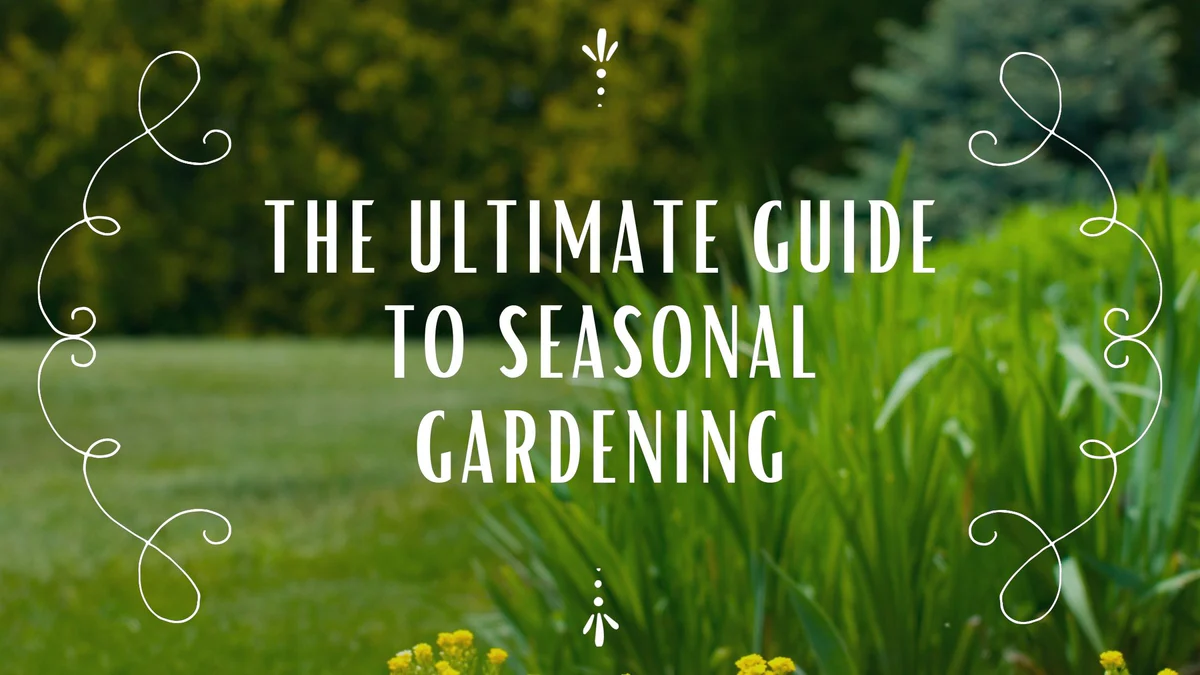The Ultimate Guide to Seasonal Garden Maintenance
Maintaining a beautiful garden throughout the year requires attention, planning, and care tailored to each season. Gardens are living ecosystems, and their needs change with the weather. Whether you’re an experienced gardener or just starting, this seasonal guide will help you keep your garden lush and thriving year-round.
Spring: Awakening Your Garden
Spring marks the start of a new growing season, as plants awaken from their winter dormancy. This is the perfect time to prep your garden for vibrant growth.
Tasks to Focus On:
- Clean Up:
- Remove dead leaves, fallen branches, and other debris accumulated over winter.
- Prune dead or damaged branches from trees and shrubs.
- Prepare the Soil:
- Test the soil’s pH and nutrient levels.
- Add compost or organic matter to enrich the soil.
- Loosen compacted soil with a garden fork or tiller.
- Planting:
- Sow seeds for cool-season vegetables like spinach, lettuce, and peas.
- Plant flowering bulbs such as tulips, daffodils, and crocuses.
- Divide and replant perennials for healthy growth.
- Pest Control:
- Inspect plants for signs of pests or diseases.
- Use natural remedies like neem oil or introduce beneficial insects like ladybugs.
Summer: Nurturing Growth and Protecting Plants
Summer is the season of abundance, but it also comes with challenges like heat stress and pests.
Tasks to Focus On:
- Watering:
- Water early in the morning to reduce evaporation.
- Use drip irrigation or soaker hoses for efficient watering.
- Mulch around plants to retain moisture and keep roots cool.
- Fertilizing:
- Apply fertilizer to support blooming flowers and ripening fruits.
- Choose slow-release or liquid fertilizers based on your plants’ needs.
- Weeding:
- Regularly pull weeds to prevent them from competing for nutrients.
- Use a hoe or weeding tool for easy removal.
- Pest and Disease Management:
- Monitor for pests like aphids, caterpillars, and mites.
- Remove affected leaves or use organic pesticides.
- Harvesting:
- Pick fruits, vegetables, and herbs regularly to encourage continuous production.
- Deadhead flowers to promote new blooms.
Fall: Preparing for Dormancy
As temperatures cool, it’s time to wind down your garden and prepare for the dormant months.
Tasks to Focus On:
- Cleaning and Clearing:
- Remove spent plants, fallen leaves, and garden debris.
- Compost organic materials to create nutrient-rich compost for spring.
- Soil Care:
- Add a layer of compost or manure to enrich the soil.
- Plant cover crops like clover to prevent erosion and improve soil health.
- Planting:
- Plant cool-season vegetables such as kale, broccoli, and carrots.
- Add spring-flowering bulbs like hyacinths and alliums.
- Pruning:
- Prune shrubs and perennials to encourage healthy growth in spring.
- Avoid heavy pruning of trees, as it can encourage new growth vulnerable to frost.
- Protecting Plants:
- Apply mulch around plants to insulate roots.
- Bring sensitive potted plants indoors or to a sheltered area.
Winter: Rest and Planning
Winter is a time for gardens to rest, but there are still tasks to keep you engaged and prepared for the next growing season.
Tasks to Focus On:
- Protecting Plants:
- Cover vulnerable plants with burlap or frost cloth.
- Use cloches or cold frames to extend the growing season for hardy crops.
- Tool Maintenance:
- Clean and sharpen gardening tools.
- Oil metal parts to prevent rust.
- Planning:
- Review what worked well and what didn’t during the past year.
- Plan your garden layout and order seeds or plants for spring.
- Composting:
- Turn your compost pile regularly to keep it active.
- Add kitchen scraps and yard waste to maintain a balance of green and brown materials.
- Winter Interest:
- Add decorative elements like garden sculptures, bird feeders, or evergreens for visual appeal during winter.
General Tips for Year-Round Garden Success
- Regular Monitoring: Walk through your garden weekly to check for issues or opportunities for improvement.
- Invest in Quality Tools: High-quality tools make gardening easier and more efficient.
- Stay Informed: Learn about the specific needs of your plants, as care requirements vary by species.
- Be Patient: Gardening is a process, and even small efforts can yield beautiful results over time.
Conclusion
Seasonal garden maintenance is key to ensuring a healthy, thriving garden year-round. By tailoring your care routine to the changing seasons, you’ll not only enjoy the beauty of your outdoor space but also cultivate a deeper connection with nature.
So grab your tools, embrace the rhythm of the seasons, and watch your garden flourish!


